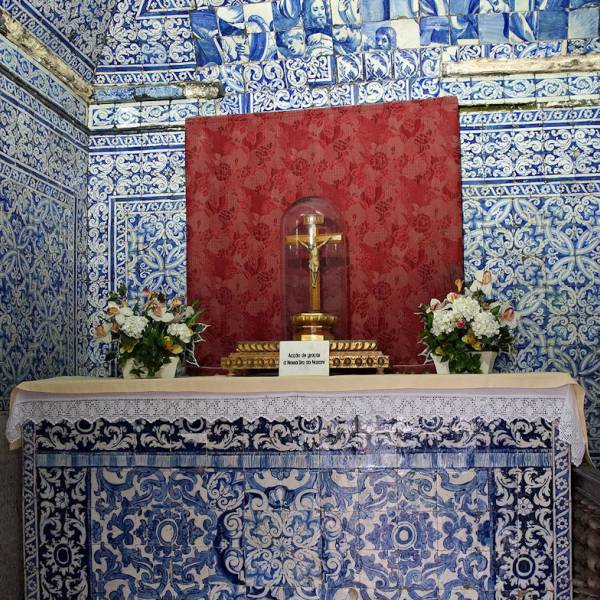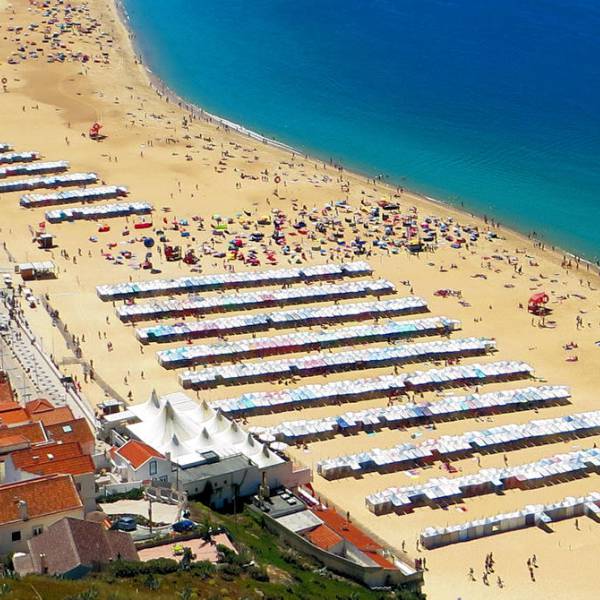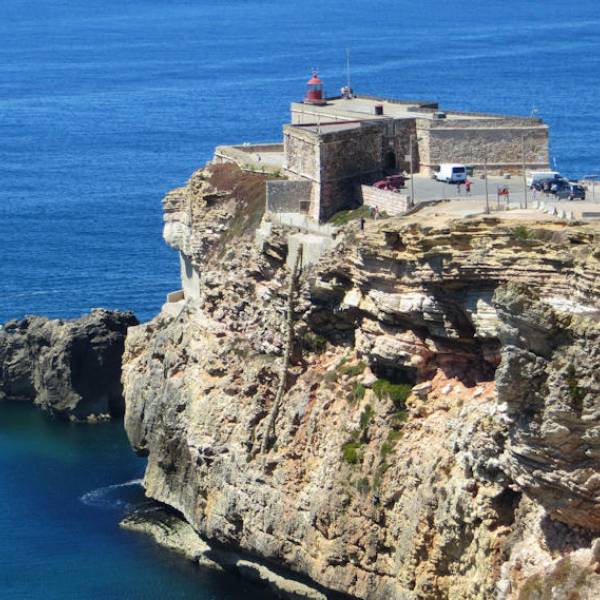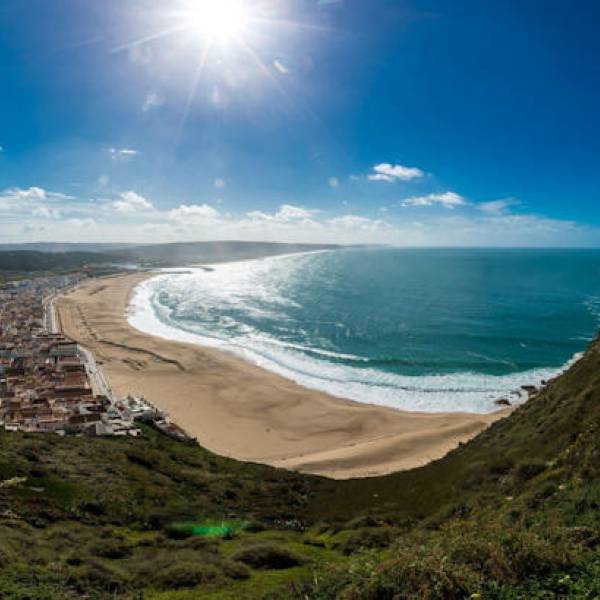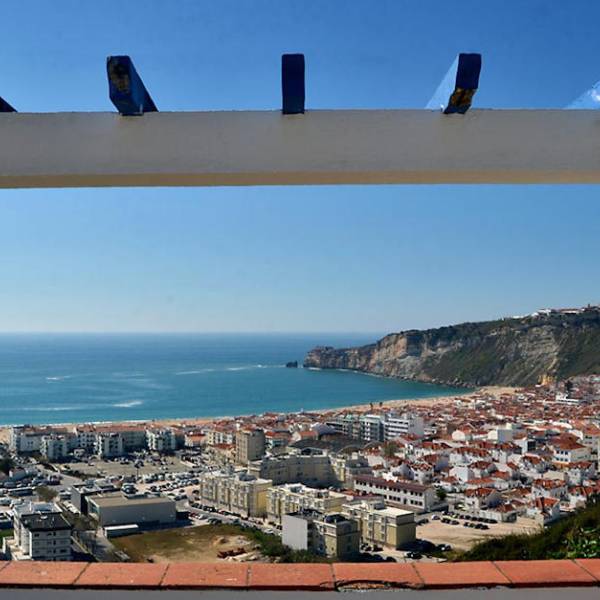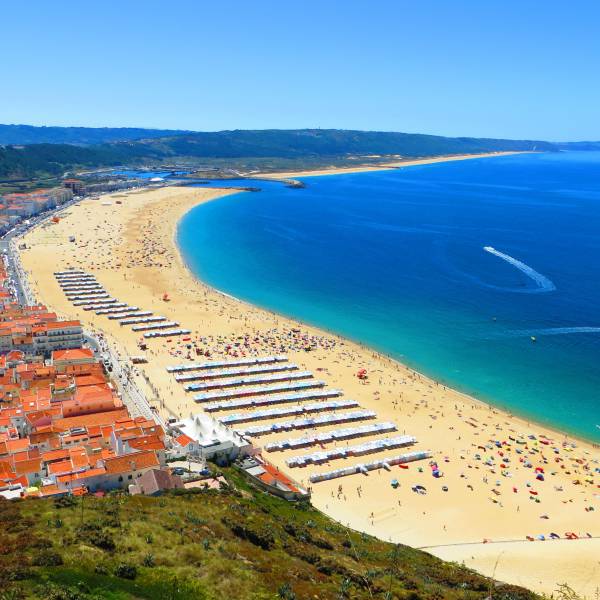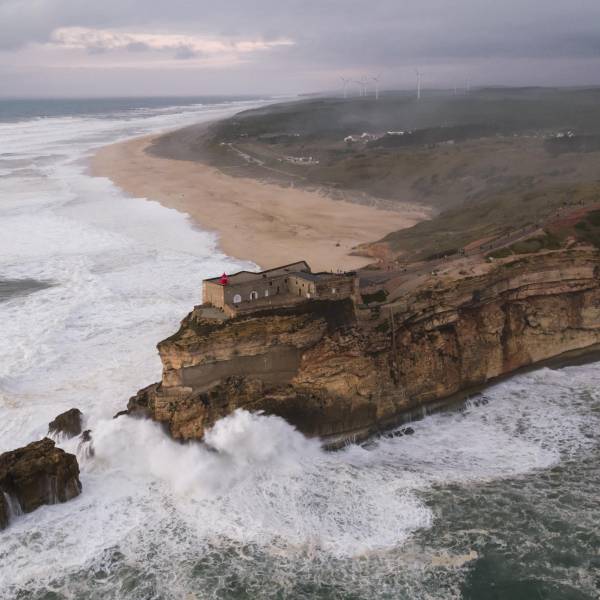The Fort of São Miguel Arcanjo in Nazaré is a recommended day trip from Lisbon for its historical significance, breathtaking coastal views, and the opportunity to witness the world-renowned surf at Nazaré Beach.
This fort holds great cultural significance and has been classified as a Property of Public Interest since 1978. Its construction began during the reign of King Sebastian of Portugal in 1577, with the aim of defending the bay from attacks by Algerian, Moroccan, Dutch, and Norman pirates who frequently targeted the Atlantic coastline. In 1644, under the orders of King John IV, the fort underwent remodeling and expansion to strengthen its strategic position. The fort's vigilant guardian became St. Michael the Archangel, the patron saint of many sanctuaries often built in elevated locations. Above the fort's entrance portal, King John IV commissioned the placement of a limestone statue of St. Michael the Archangel, bearing the inscription "ELREY DOM JUAN-1644," marking the year of its construction.
The Fort of São Miguel Arcanjo survived the French Invasions, during which enemy soldiers took refuge and fought against the local population in Sítio and Pederneira. The invaders were only expelled from the country in 1811, making this monument a symbol of popular revolt and the autonomy of the people of Nazaré.
The fort played a role in the Liberal Wars. During this period, Nazaré and the fort became the scene of small skirmishes between the supporters of D. Pedro IV and D. Miguel. In 1830, King Miguel I visited Sítio and Nazaré Beach, where he was welcomed with festivities. He also visited the Fort of São Miguel Arcanjo, which underwent repairs the following year, including a new altar for its patron saint and a new access walkway. After King Miguel's exile on July 1, 1834, as a result of conflicts between liberals and absolutists, the stone sculpture of St. Michael above the fort's entrance suffered severe damage. It was vandalized by liberals who removed it from its niche and threw it over the fort's walls onto the beach. The mutilated statue remains there today, bearing witness to the clashes between absolutists and liberals in the region.
In the early 20th century, no longer serving a military function, the fort became the site of a small lighthouse and a house for the lighthouse keeper to support fishing activities. On October 29, 1903, restoration work was carried out to accommodate the lighthouse in the Fort of São Miguel Arcanjo. Finally, on December 1, 1903, a harbor light was activated at the fort, providing navigational guidance along the coast.
The original fortification dates back to the reign of King Sebastian (1557-1578), who ordered the construction of a fort to defend the fishing village on the Pederneira hill in 1577. The port of Pederneira was used to transport timber from the Pinhal d'El Rey (Leiria Pine Forest), and its shipyards were economically significant at the time.
During the Philippine Dynasty, the fort's construction gained momentum when King Philip II (1598-1621) decided to rebuild the fortress according to the plans of the late military engineer and architect Giovanni Vicenzo Casale. However, while still under construction, a Dutch corsair entered the port of Pederneira in 1611 and seized a Portuguese vessel carrying pine wood and a Basque ship carrying iron, wine, and weapons.
Lisbon.vip Recommends
During the Peninsular War, after its artillery pieces were removed to the Cascais Fortress, the fort was occupied by French troops from 1807 onward. A detachment of 50 soldiers under General Junot's forces was stationed there. However, the local population expelled them the following year. During this event, a group of six students dressed in the uniforms of the Coimbra Academic Battalion tried to convince the invaders that they had received reinforcements. They traveled to Cascais in a small boat to search for weapons and managed to repel the enemy reinforcements coming from the Peniche Fortress. Later, the French invaders returned to the region, killing the inhabitants and setting fire to houses and boats in Nazaré, Pederneira, and Sítio as a reprisal.
In the early 20th century, in 1903, a lighthouse was installed within the fort's premises to assist navigation along that stretch of the coast. Restoration work was carried out on the monument between 1907 and 1941.
This maritime fortification, built in the Mannerist style, features an irregular organic layout adapted to the rocky promontory on which it stands. It has a bastion at each corner and walls made of irregular stone masonry with ashlar corners, including eight rooms that served as the Troop Quarters, Command House, Arsenal, and Warehouses. The second floor houses the Parade Ground.
Above the monumental gate, a bas-relief image of St. Michael the Archangel, the fort's patron saint, and an inscription "El-Rey Dom Joam o Quarto – 1644" are prominently displayed, though both are now significantly weathered.
In 1901 or 1902, the expropriation process for the fort began, followed by partial reconstruction of a damaged bastion to house the Nazaré Lighthouse (1903). The lighthouse is still active today, with a luminous range of fifteen nautical miles and a sound signal for warning during heavy fog.
The Fort of São Miguel Arcanjo in Nazaré stands as a testament to the region's historical significance, military architecture, and cultural heritage. Visitors can explore its fascinating past, admire its panoramic views, and gain insights into the rich history of Nazaré and Portugal.
Map View




